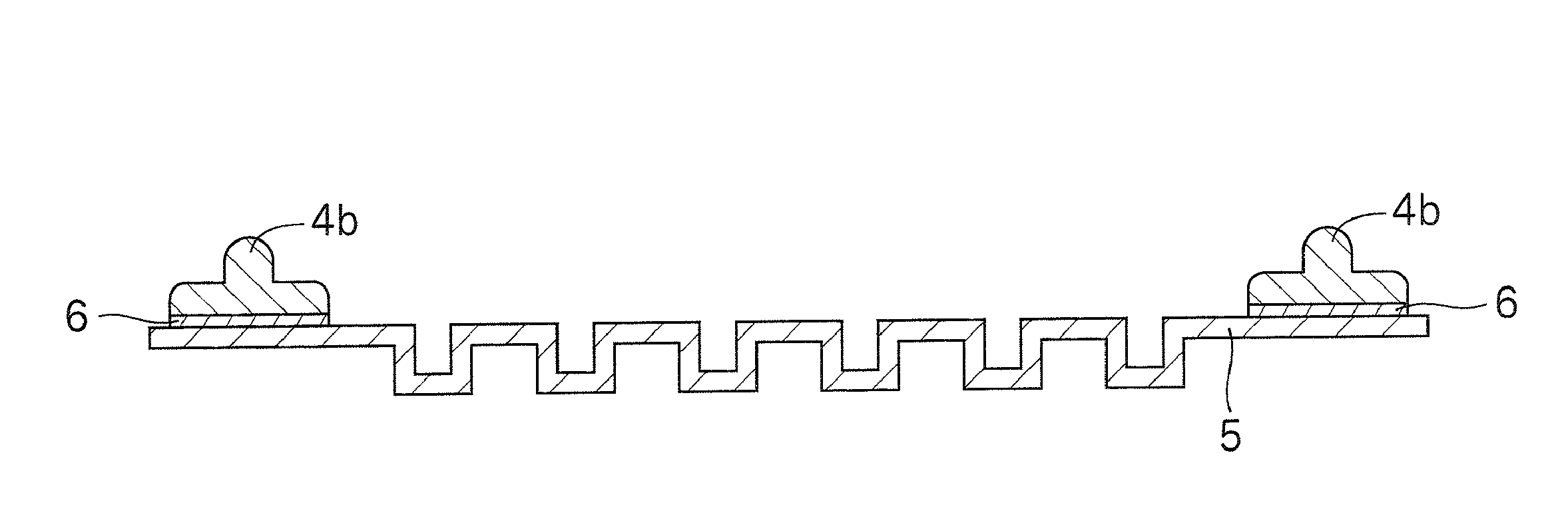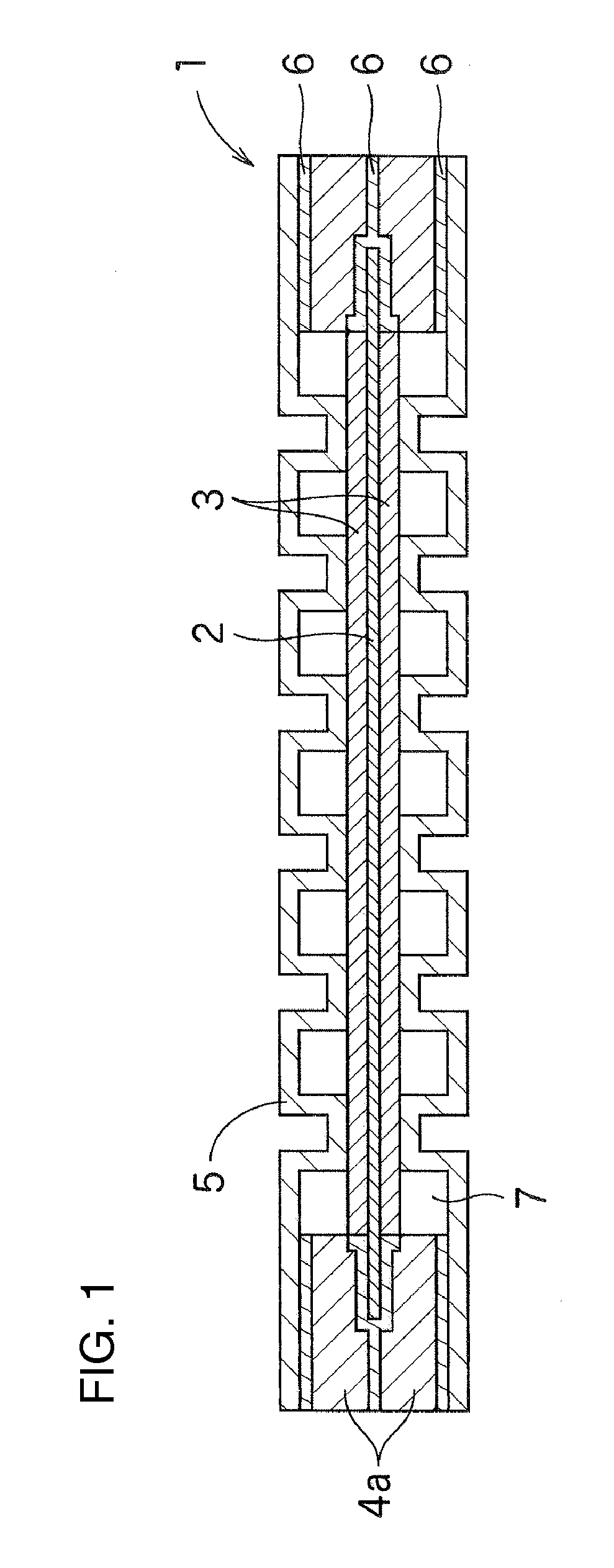Seal member for fuel cell and fuel cell seal body using same
a technology of sealing member and fuel cell, which is applied in the direction of fuel cell details, fuel cells, electrochemical generators, etc., can solve the problem of still showing an insufficient sealing property at extremely low temperature, and achieve the effect of improving adhesion reliability, less prone to being reduced, and satisfying adhesiveness
- Summary
- Abstract
- Description
- Claims
- Application Information
AI Technical Summary
Benefits of technology
Problems solved by technology
Method used
Image
Examples
examples
[0130]The present invention is hereinafter described in more detail by way of Examples, but the present invention is not limited to the following Examples without departing from the gist of the invention. It should be noted that the “part (s)” and “%” mean values in terms of weight in the following examples unless otherwise specified.
[0131]First, prior to Examples and Comparative Examples, the following materials were prepared for rubber compositions.
[0132]>
examples 1 to 7 and 9 to 11
, and Comparative Examples 1 to 3
(Production of Vulcanized Rubber for Sealing Member)
[0153]Components shown in Tables 2 and 3 below were blended at ratios shown in the Tables, to prepare a rubber composition. Specifically, of the components shown in Tables 2 and 3, the rubber component (A), the softening agent (E), and the reinforcing agent (F) were first kneaded in a Banbury mixer at 120° C. for 5 minutes. After the kneaded product was cooled, the cross-linking agent (B), the adhesive component (C), and the cross-linking aid (D) were added thereto, and the mixture was kneaded with an open roll at 50° C. for 10 minutes. Thus, the rubber composition was prepared. Then, the obtained rubber composition was cross-linked by being retained at 150° C. for 10 minutes, and a rubber piece was cut out therefrom. Thus, a vulcanized rubber (thickness: 5 mm, size: 25 mm×60 mm) serving as the sealing member was produced.
example 8
[0154]Components shown in Table 2 were blended at ratios shown in the Table, to prepare a rubber composition. Specifically, of the components shown in Table 2, the rubber component (A), the softening agent (E), and the reinforcing agent (F) were first kneaded in a Banbury mixer at 120° C. for 5 minutes. After the kneaded product was cooled, the cross-linking agent (B), the adhesive component (C), and the cross-linking aid (D) were added thereto, and the mixture was kneaded with an open roll at 50° C. for 10 minutes. Thus, the rubber composition was prepared. Then, the obtained rubber composition was cross-linked by being retained at 190° C. for 10 minutes, and a rubber piece was cut out therefrom. Thus, a vulcanized rubber (thickness: 5 mm, size: 25 mm×60 mm) serving as the sealing member was produced.
[0155]
TABLE 2(Part(s))Example12345678EPDM(A1)————————EPDM(A2)————————EPDM(A3)————————EPDM(A4)100———————EPDM(A5)—100100100100100—100EPDM(A6)——————100—Peroxyketal (B1)55552155—Dialkylper...
PUM
| Property | Measurement | Unit |
|---|---|---|
| half-life temperature | aaaaa | aaaaa |
| pour point | aaaaa | aaaaa |
| half-life temperature | aaaaa | aaaaa |
Abstract
Description
Claims
Application Information
 Login to View More
Login to View More - R&D
- Intellectual Property
- Life Sciences
- Materials
- Tech Scout
- Unparalleled Data Quality
- Higher Quality Content
- 60% Fewer Hallucinations
Browse by: Latest US Patents, China's latest patents, Technical Efficacy Thesaurus, Application Domain, Technology Topic, Popular Technical Reports.
© 2025 PatSnap. All rights reserved.Legal|Privacy policy|Modern Slavery Act Transparency Statement|Sitemap|About US| Contact US: help@patsnap.com



